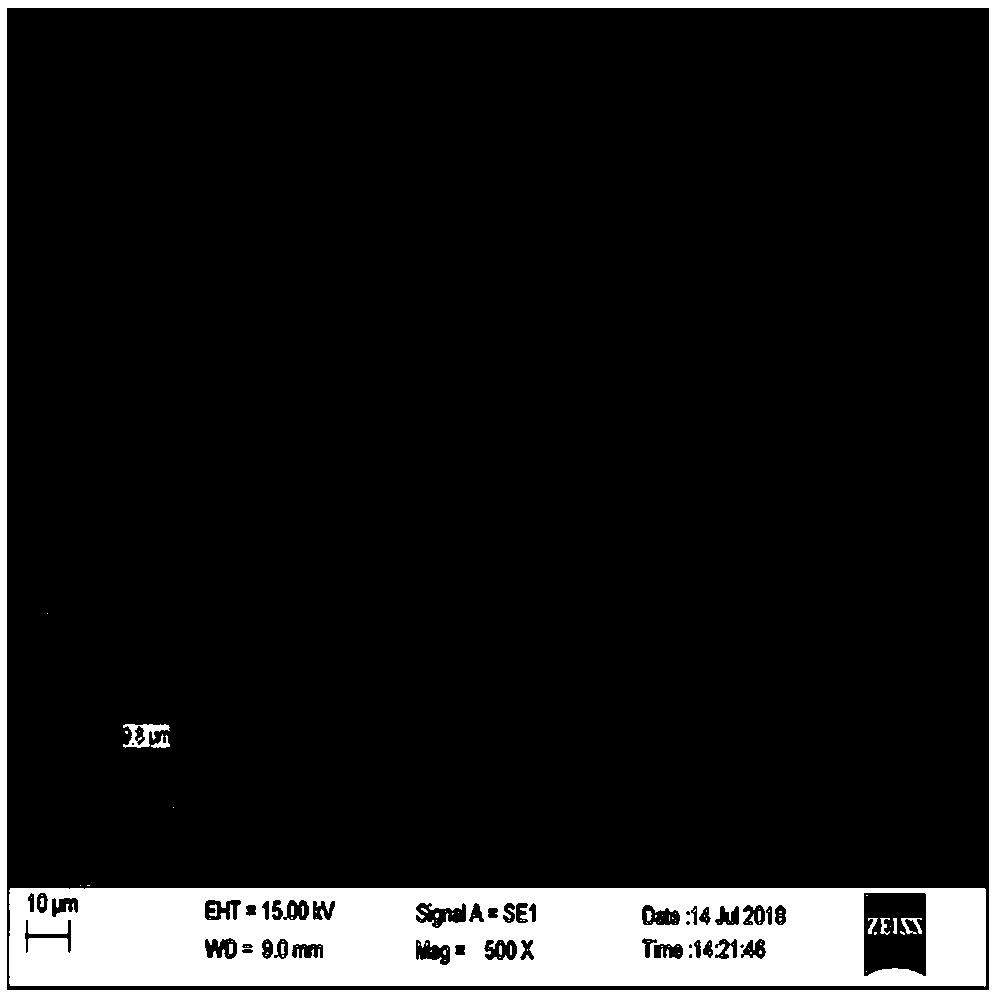Method for testing mass ratio capacity of lithium battery material
A technology of mass ratio and capacity, applied in the measurement of electrical variables, measurement of electricity, measurement devices, etc., can solve the problems of cycle failure, gram capacity deviation, etc.
- Summary
- Abstract
- Description
- Claims
- Application Information
AI Technical Summary
Problems solved by technology
Method used
Image
Examples
specific Embodiment 1
[0034] (1) Production of positive pole piece: Nickel-cobalt-aluminum ternary material (NCA) is used as the positive electrode material, according to the nickel-cobalt-aluminum ternary material (NCA): acetylene black: polyvinylidene fluoride (PVDF) = 92:5:3 , respectively weighed 15.0030g of nickel-cobalt-aluminum ternary material (NCA), 0.8154g of acetylene black, and 9.7846g of 5% polyvinylidene fluoride (PVDF) in a 50mL beaker, and added an appropriate amount of N-methylpyrrolidone (NMP) to adjust The solid content is 55%, stirred for 4 hours, evenly coated on aluminum foil, the coating thickness is 150um, vacuum dried at 120°C, and N-methylpyrrolidone (NMP) is removed to obtain the positive electrode sheet;
[0035] (2) Production of negative pole piece: take nano-lithium titanate as the negative electrode material, according to nano-lithium titanate: acetylene black: polyvinylidene fluoride (PVDF) = 92:5:3, weigh 15.0030g nano-lithium titanate respectively , 0.8154g acetyl...
specific Embodiment 2
[0045] (1) Production of positive pole piece: Nickel-cobalt-aluminum ternary material (NCA) is used as the positive electrode material, according to the nickel-cobalt-aluminum ternary material (NCA): acetylene black: polyvinylidene fluoride (PVDF) = 92:5:3 , respectively weighed 15.0030g of nickel-cobalt-aluminum ternary material (NCA), 0.8154g of acetylene black, and 9.7846g of 5% polyvinylidene fluoride (PVDF) in a 50mL beaker, and added an appropriate amount of N-methylpyrrolidone (NMP) to adjust The solid content is 55%, stirred for 4 hours, evenly coated on aluminum foil, the coating thickness is 150um, vacuum dried at 120°C, and N-methylpyrrolidone (NMP) is removed to obtain the positive electrode sheet;
[0046] (2) Production of negative pole piece: take nano-lithium titanate as the negative electrode material, according to nano-lithium titanate: acetylene black: polyvinylidene fluoride (PVDF) = 95:3:2, weigh 15.0030g nano-lithium titanate respectively , 0.4738g acetyl...
PUM
 Login to View More
Login to View More Abstract
Description
Claims
Application Information
 Login to View More
Login to View More - R&D
- Intellectual Property
- Life Sciences
- Materials
- Tech Scout
- Unparalleled Data Quality
- Higher Quality Content
- 60% Fewer Hallucinations
Browse by: Latest US Patents, China's latest patents, Technical Efficacy Thesaurus, Application Domain, Technology Topic, Popular Technical Reports.
© 2025 PatSnap. All rights reserved.Legal|Privacy policy|Modern Slavery Act Transparency Statement|Sitemap|About US| Contact US: help@patsnap.com



